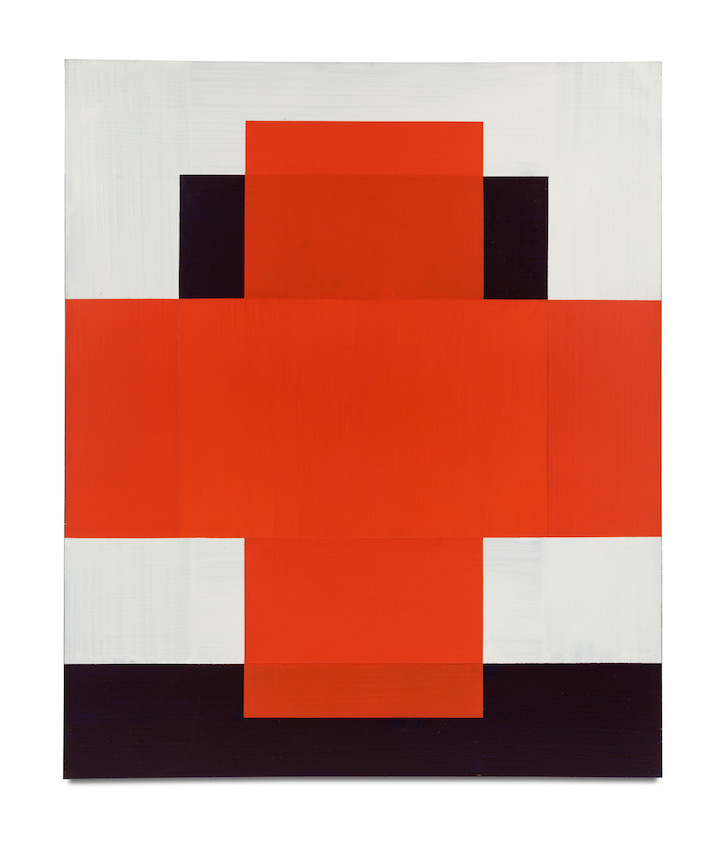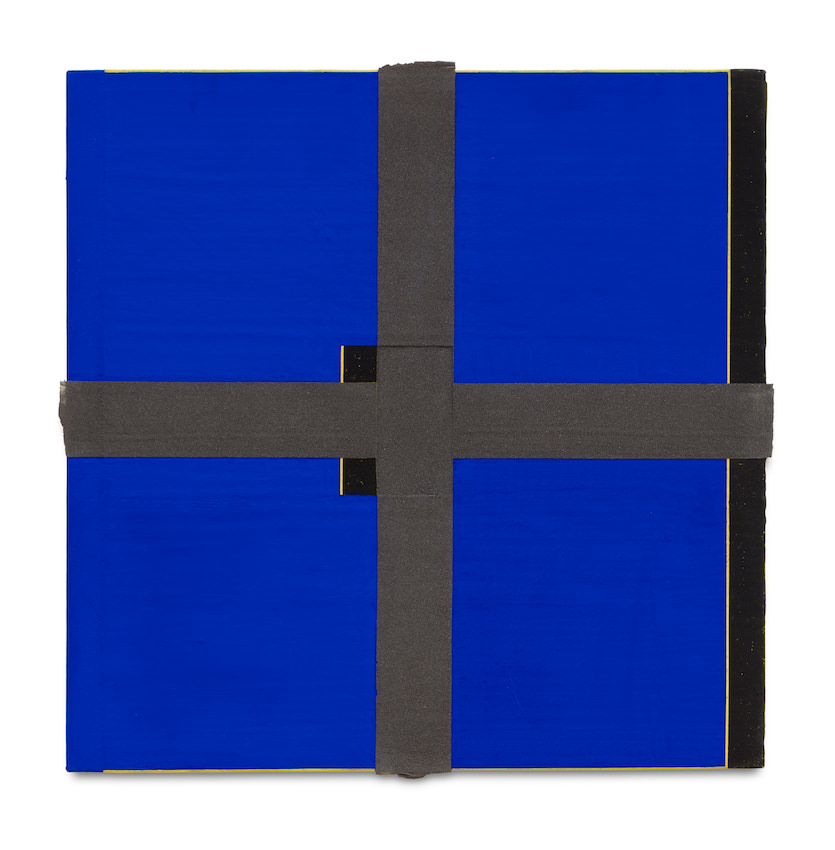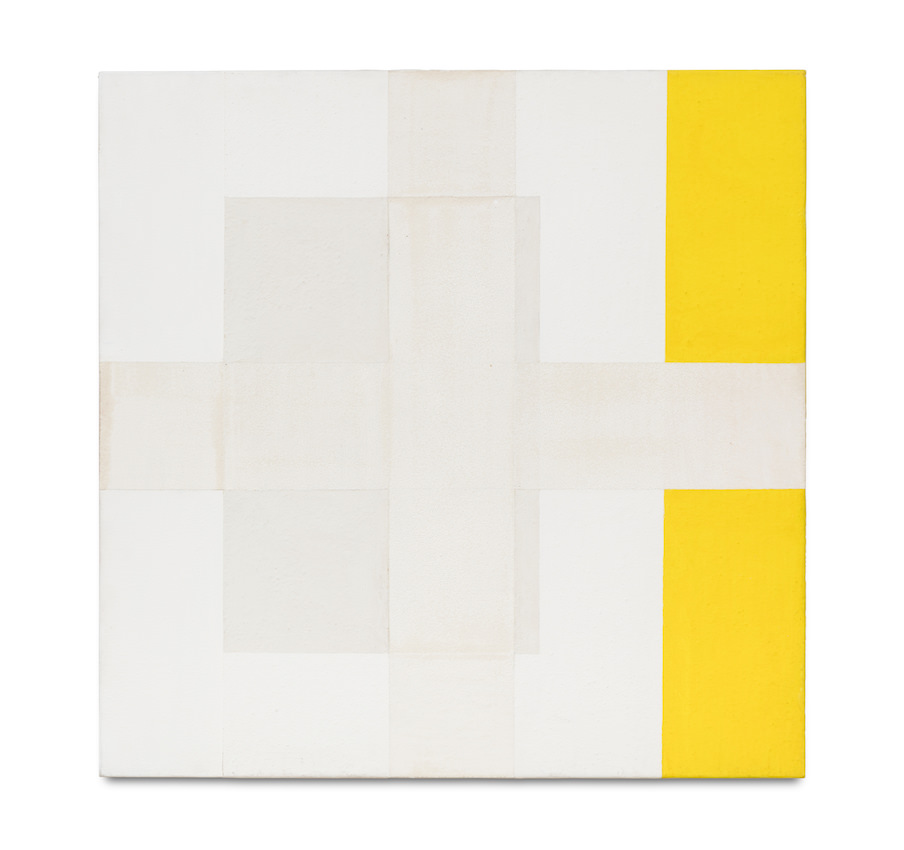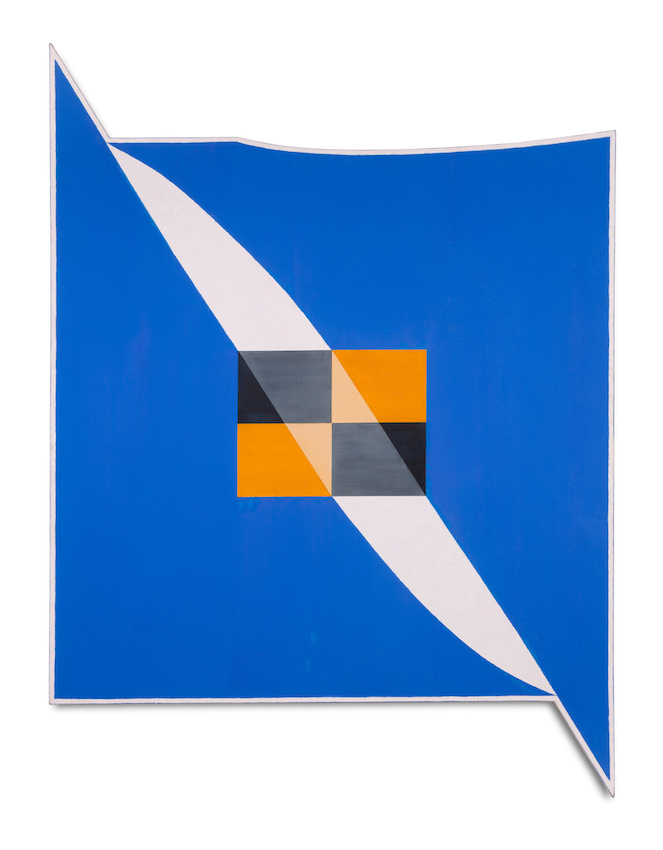Currently on view at Van Doren Waxter in New York is the exhibition “Harvey Quaytman: Hone.” The show, up through April 28, is comprised of a collection of Quaytman’s geometric abstract paintings. Known for large modern canvases, harsh edges, layered compositions, and dauntless monochromatic tones, the artist was a recipient of many acclaimed honors before his passing in 2002, including the Guggenheim Fellowship in 1979 and 1985, an Artist’s Fellowship from the National Endowment for the Arts, the Elizabeth Foundation Prize for Painting in 1994, and the Academy Award in Art from the American Academy of Arts and Letters in 1997. His work has since gone on to represent many Geometric Abstraction and Modernism movement examples, and has been included in public museum collections at institutions such as the Museum of Modern Art, the Whitney Museum of American Art, the Museum of Fine Arts in Boston, and the Carnegie Museum of Art.
To learn more about the exhibition and Quaytman’s iconic works, Whitewall spoke to the gallery’s co-founder, Dorsey Waxter.

1990
WHITEWALL: Why did you want to show a collection of Harvey Quaytman’s works at the gallery?
DORSEY WAXTER: I think his work is a strong addition to the gallery’s long standing interest in American abstraction from the second half of the 20th century.

Acrylic and crushed glass on canvas
60 x 60 inches (152.4 x 152.4 cm)
Signed, titled, dated on reverse HQ 141.
Courtesy of Van Doren Waxter.
WW: What notable works are included in this exhibition?
DW: There are two works, Untitled (1983) and Union Square, Tantra (1982-83), that are indicative of the moment when the artist is moving away from curvilinear forms to exclusively geometric rectilinear paintings. Prior to this moment, Quaytman made paintings that were eccentrically shaped using a pendulum or hammock shape, so the curve was very prominent.

Harvey Quaytman
WW: What can the audience see here before the planned 2018 retrospective at The Berkeley Museum and Pacific Film Archive?
DW: Our exhibition spans seven years so its tightly focused on works that employ the cruciform within the rectangle. We’ve chosen works that exemplify Quaytman’s attention to surface, especially his use of iron filings which he would treat with water to turn them a rust color or his use of crushed glass with pigment that lend a reflective light quality to the paintings.

Marienburg
WW: This is the first representation of his works since his work was on view at McKee Gallery—his longtime dealer—in 2014. What is special about this revisit of his work?
DW: Artists such as Quaytman were not receiving a lot of attention in the 70s and 80s when the prevailing focus was on Minimalism and The Pictures Generation. Yet there were quite a few artists working abstractly, such as Sean Scully, Brice Marden, David Reed, John Walker, Jake Berthot, Bill Jensen and Alan Cote, with roots in creating art through a more personal lens. Quaytman deserves to be considered for having broken with the traditions of AbEx.
WW: How do you feel Quaytman was different than other abstractionists during his time?
DW: I didn’t know Quaytman personally, but I do know that he made his work for himself, for what interested him. He was not part of a movement.
WW: What is your favorite works on view?
DW: It’s The Mortification of Skill, L.S. from 1987. Parts of this painting look like velvet.
“Harvey Quaytman: Hone” is on view through April 28.








